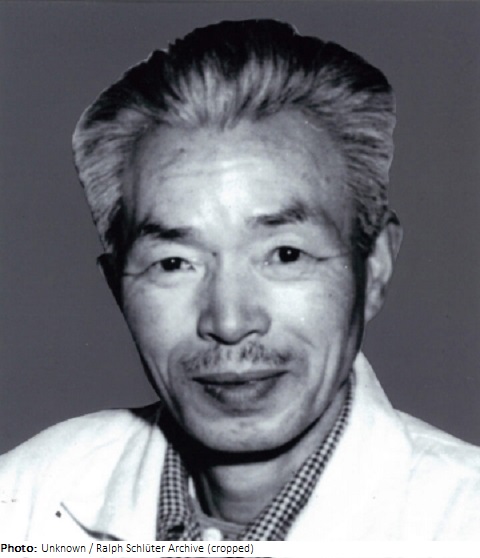Yoshioki Hasegawa

Biographical information
| Roles | Competed in Olympic Games |
|---|---|
| Sex | Male |
| Full name | Yoshioki•Hasegawa |
| Used name | Yoshioki•Hasegawa |
| Original name | 長谷川•義起 |
| Other names | Katsuyuki Hasegawa, 長谷川勝之, Taikai |
| Born | 3 March 1892 in Takaoka, Toyama (JPN) |
| Died | 20 February 1974 in Toshima, Tokyo (JPN) |
| NOC |  Japan Japan |
Biography
Japanese sculptor Yoshioki Hasegawa was born as Katsuyuki Hasegawa and also used the stage name Taikai. He graduated from the sculpture department of the Tokyo School of Fine Arts in 1915. At the 1920 Emperor Exhibition his sculpture Reikō (Divine Light) won him the first of numerous prizes at official exhibitions. In 1924, he created the monument for Admiral Prince Higashifushimi Yorihito, and in a competition in 1936 he was awarded the first prize for his Meian (Light and Dark), a relief of the empire education tower, which was located in a park in Osaka.
One of Yoshioki’s favorite subjects was the Japanese national sport Sumo. He submitted Enban’nage (Discus Throw) to the 1932 Olympic Arts Competition in Los Angeles and four years later four works to the art competition in Berlin, of which Ryoka Mae (Rikishi) (Two Figures (Wrestling)) achieved an Honorable Mention. The fact that he portrayed both historical Japanese and western sports is a sign of the cultural transition period in Japan. Hasegawa was active in various art societies, notably for the Japanese Sculpture Association, the Japanese Society for Engraved Pottery and others. He received the Gongju Medal just weeks before he died at his home in Tokyo from pneumonia.
A 25 cm high bronze figure of the golf icon Bobby Jones from 1935 is the only one by Hasegawa, although it shows a putt and not a drive. However, it is probably not the work presented in Berlin. An illustration from the Japanese section of the exhibition in Berlin shows in the center the approximately life-sized sculpture Wrestling, Technique of a Wrestling Champion. The sculpture National Sport, the addition “Wrestling” seems to be a clarification for the catalog, was probably made as a model in 1936, but as a bronze not before 1938. It stands in front of the Sumo Hall in the park of the old Takaoka Castle, his hometown. A cast from 1977 was placed in front of the Sumo hall of the Yasukuni Shrine in Tokyo’s Chiyoda district. The two most important Sumo wrestlers of the early 20th century, Hitachiyama and Umegatani, are shown. The work Sumo (Wrestling) - Ready! National sport, as it is titled in the catalog, is listed in Japanese sources under arts and crafts is entitled Shikiri, in Sumo the preparation phase before the fight. The bronze Discus throw from 1932 could not be identified.
Results
| Games | Discipline (Sport) / Event | NOC / Team | Pos | Medal | As | |
|---|---|---|---|---|---|---|
| 1932 Summer Olympics | Art Competitions |  JPN JPN |
Yoshioki Hasegawa | |||
| Sculpturing, Statues, Open (Olympic) | ||||||
| 1936 Summer Olympics | Art Competitions |  JPN JPN |
Yoshioki Hasegawa | |||
| Sculpturing, Statues, Open (Olympic) | ||||||
| Sculpturing, Statues, Open (Olympic) | ||||||
| Sculpturing, Statues, Open (Olympic) | ||||||
| Sculpturing, Statues, Open (Olympic) |